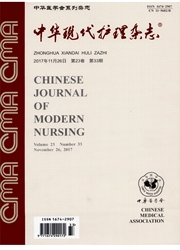

 中文摘要:
中文摘要:
目的 了解宁夏地区静脉治疗的发展和管理现状及存在的问题.方法 对宁夏地区42家医院的护理人员进行问卷调查.结果 42家医院静脉血管通路工具使用情况:100%使用头皮钢针进行输液,73.80%医院使用静脉留置针,14.28%医院开展了PICC置管,仅有1家有新生儿脐静脉置管,中长导管和植入式输液港均没有开展;静脉治疗配置设备情况:3家医院有静脉配置中心,39家医院的静脉配置工作在治疗室完成,在生物柜完成抗肿瘤药物配置的只有3家医院;静脉治疗管理情况:3家医院成立静脉治疗团队开展会诊工作,23家医院有静脉治疗的相关流程,2家医院开展专项质控工作.结论 宁夏医院静脉治疗使用工具相对滞后,静脉配置职业防护存在安全隐患,在静脉治疗组织管理、培训、科研等方面需要向体系化、专业化和标准化方面发展.
 英文摘要:
英文摘要:
Objective To investigate the current situation and existing problem of development and management of intravenous therapy in Ningxia region. Methods A total of 42 hospitals from Ningxia region were admitted to questionnaire survey. Results Venous vascular access tools usage:42 hospitals used scalp needle for infusion, 73. 80% of the hospitals used intravenous indwelling needle, 14. 28% of the hospitals carried out the PICC tube, only 1 hospital had umbilical vein for newborns, med-long catheter and implantable infusion port were not carried out in all hospitals; intravenous therapy equipment: 3 hospitals had vein of the configuration center, 39 hospitals 3 hospitals with a vein of the configuration center, 39 hospitals in the therapeutic room of the hospital to complete the work in the to complete the anti tumor drug allocation of only 3 hospitals completed the work in the therapeutic room, only 3 hospitals completed the anti tumor drug distribution in the biological cabinet; management of intravenous therapy: 3 hospitals established venous treatment team to carry out consultation work, 23 hospitals had the relevant procedures for venous treatment, 2 hospitals carried out the special quality control work. Conclusions Intravenous therapy in Ningxia hospital is lagging behind, and there are security risks in occupational protection of vein disposition, so development of venous management, training, scientific research and other aspects should be systematic, professional and standardized.
 同期刊论文项目
同期刊论文项目
 同项目期刊论文
同项目期刊论文
 期刊信息
期刊信息
